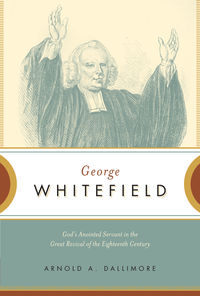The 18th Century produced evangelicalism’s greatest theologian (Jonathan Edwards), evangelist (George Whitefield), organizer (John Wesley), and songwriter (Charles Wesley). These four represent evangelicalism at its best: trans-Atlantic cooperation across theological lines, a burning zeal for evangelism, and a concomitant commitment to social reform (especially in John Wesley’s case). But they also evince the deepest theological fault line within evangelicalism, between Calvinists and Arminians, and demonstrate the ongoing tensions between the church and parachurch ministries.
Edwards, being dead, still speaks through reprints of his works and the veritable cottage industry of explaining and applying them to today’s concerns. John Wesley lives on through numerous denominations—Methodist, Wesleyan, Holiness—that trace their origins, in one way or another, to his labors, and through Christian small groups that, wittingly or not, perpetuate aspects of his societies, bands, and classes. And we sing Charles Wesley’s hymns, though not often enough—at least for my taste.
Whitefield, on the other hand, has been largely neglected. This is odd, for Whitefield arguably did more to promote trans-Atlantic evangelicalism than any of his peers, working with an ecumenical cast of Anglicans, Baptists, Congregationalists, Independents, and Presbyterians. Though a Calvinist—and for a period of time in deep dispute with the Wesleys over their Arminianism—he worked with Arminian evangelicals. He preached as often—if not more often—than John Wesley, and to larger crowds. He pioneered many of the techniques that Wesley perfected—e.g., open-air preaching, circuit riding, religious societies. Indeed, in his own time, he was often referred to as “the Founder of Methodism.”
Over the course of three decades, Arnold A. Dallimore sought to rectify this neglect of Whitefield. In 1970, he published the first volume of George Whitefield: The Life and Times of the Great Evangelist of the Eighteenth Century (Banner of Truth). He published the second volume in 1980. In 1990, Crossway published the one-volume abridgement of the biography under review here. It was reprinted in 2010 with a new cover. Crossway also published The Sermons of George Whitefield in 2012.
I hope to review The Sermons soon, but for now let me say something about Dallimore’s abridged biography. It is a self-conscious hagiography of the great evangelist. I use the word hagiography literally, for after reviewing Whitefield’s life and labors, Dallimore writes: “George Whitefield was a holy man” (p. 200). A Christian reader of George Whitefield—at least an evangelical Protestant reader—will likely come to the same conclusion. Whitefield’s zeal for evangelism, concern for the poor, personal philanthropy, and courage in the face of mobs mark him out as a deeply Christian man. By outlining the course of his life and ministry, Dallimore has performed a signal service for evangelical readers.
By nature, hagiographies are not critical biographies, however. They describe a life in order to inspire emulation. But this description has an apologetic cast to it. Throughout this book, for example, Dallimore compares and contrasts Whitefield and John Wesley, often to the latter’s detriment. (Charles Wesley comes out better because he was personally closer to Whitefield than his brother John.) His treatment of Whitefield is defensive, as if he mourns the spotlight historians have shown on John rather than George. He sees faults in Whitefield: emotionalism in his early ministry, not to mention a critique of Christian ministers whom he felt were not personally born again or whose ministries were insufficiently evangelical. “His chief fault,” Dallimore avers, “was his condoning the practice of slavery, the one dark blot on his otherwise spotless record.” A critical biography would examine these topics in more detail. If Dallimore does examine them more closely in his two-volume biography, he has chosen not to include the results of that examination here.
And there are topics that might interest modern readers. In The Divine Dramatist, Harry S. Stout explores Whitefield’s self-promotion and theatricality. In The Accidental Revolutionary, Jerome Dean Mahaffey explores the political effects of Whitefield’s ministry in the American colonies. How Whitefield innovated the practice of evangelism and what effect those innovations have on contemporary evangelicals is interesting to me, as a church leader. And as an American, I’m interested in the ways religion influenced the cause of revolution. But these topics go unremarked upon (at least in the abridgement).
I make these critical remarks of George Whitefield not because I didn’t enjoy the book or wouldn’t recommend it. I did, and I would. Rather, I make them because readers should know what to expect from Dallimore’s work. It will give them a good outline of the chronology and major events in Whitefield’s life. And it should inspire readers—at least if they are evangelical—to greater personal holiness, zeal for the lost, and desire to do as much good in this life as God enables one to do. If you profit from this book, by all means read the two-volume version, which explores issues in greater depth. Nonetheless, Dallimore’s biography is not the whole picture. If your interest is more broadly historical, you’ll need to supplement your reading with critical biographies such as the ones I’ve mentioned above.
P.S. If you found my review helpful, please vote “Yes” on my Amazon.com review page.
P.P.S. Historian John Fea recommends Frank Lambert’s “Pedlar in Divinity”: George Whitefield and the Transatlantic Revivals, 1737–1770, and Thomas Kidd’s forthcoming biography of Whitefield, to be published by Yale University Press.

Leave a reply to johnfea Cancel reply